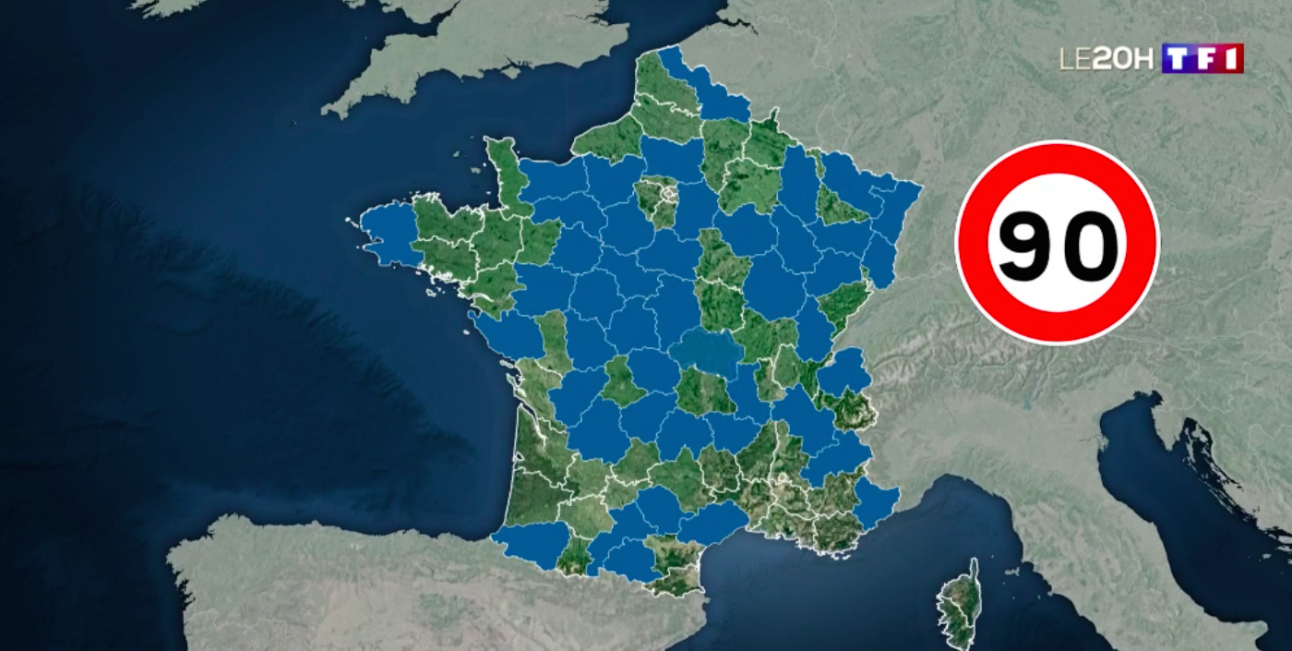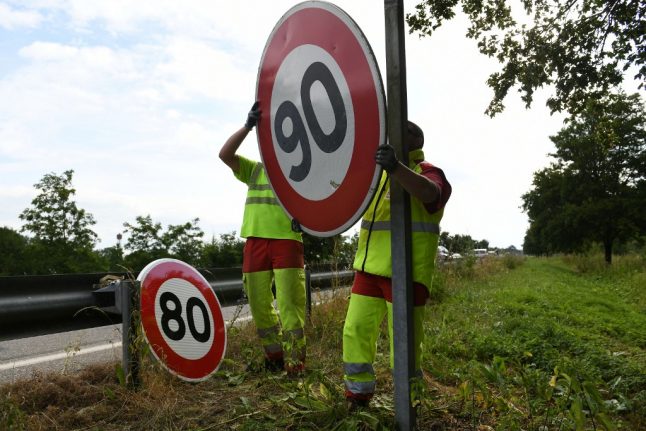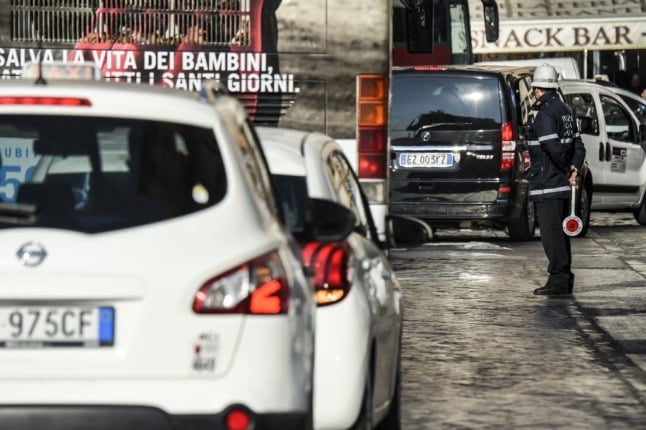In the latest chapter of France’s speed limit saga, the French government recently published a law that gives local authorities the power to decide what the speed limit on their ‘routes départementales’ should be.
This was preceded by legislation in 2018 which forced a nationwide speed drop from 90 to 80 km/h on these for single and dual-carriageway rural roads (not motorways), a measure so unpopular it became one of the primary targets of the “yellow vests” in the early stages of their protest movement.
READ MORE:
- 'Hang on, is it 80 or 90km/h?': France split over speed limit on priority routes
- Speed limits, pollution stickers and carpooling: What's about to change for drivers in France?
But following years of political wrangling and speed camera vandalism running into millions of euros, it appears this latest plan to let individual départements decide their speed limits is a measure that’s here to stay.
Grateful as many local authorities may be, this has left countless drivers in France asking themselves where they can speed up and where they should put their foot on the brake.
Where in France will the speed limit on secondary roads return to 90km/h?
Haute-Marne in eastern France is the first department to officially change back to the old 90km/h speed limit.
New speed signs have been installed along 200km of road where the changes apply, with a further 476km in the pipeline, at a total cost of €100,000.
“This investment will last a long time, and is not much compared to our entire road budget, much of which is dedicated to maintaining the roads,” announced council president Nicolas Lacroix.
Haute-Marne council reached the decision to go back to 90km/h without waiting for advice from their local road safety commission, a move that’s been dubbed populist by opponents and which also showcases the complexity of the issue at hand.
In principle, the French government only allows départements to put up the speed limit to 90km/h if they can demonstrate that there will be no safety problems.
“Here, your car is your life,” Lacroix argued.
“If you lose your licence, you risk losing your job. In this département, we didn’t see an improvement in accident rates with the drop to 80km/h.”
Côte-d'Or, Moselle, and Corrèze are three other départements that are being touted to be the next to take action and put up the 90km/h signposts again.
But other departmental authorities appear to be having doubts.
According to French TV channel TF1, more than 60 departments wanted to return to 90km/h last summer, a figure that’s now down to around 40.
The following map from TF1 shows which départements in metropolitan France have announced that they do plan to go ahead with a return to 90km/h.
 (Screengrab TF1)
(Screengrab TF1)
However, this doesn’t mean that all secondary roads in these départements will have their speed limit changed.
In Creuse, a department in central France where authorities are planning a return to 90km/h, the changes will only be implemented on 475km out of the 4,395km of their ‘routes départementales’, roughly 10 percent.
A similar plan will be carried out in Bas-Rhin in the northeast, where only 54km of the 3,400km departmental roads available will go back to 90 km/h.
As a general rule, road authorities are only bumping up the speed on express routes as well continuous road sections without interruptions or potentially dangerous intersections.
There are 400,000 kilometres of secondary roads in France, a figure which exemplifies the enormity of the issue and how confusing it’s already becoming.
“We should keep a national standard; if one department has 80km/h and the neighbouring department has 90km/h, it will quickly become unmanageable,” council president of Ille-et-Vilaine Jean-Luc Chenut warned back in August.
Which departments will stick to the 80km/h speed limit?
Seven departments have already announced their intentions to stick to the 80km/h limit:, Ardèche, Ardennes, Gard, Var, Loire-Atlantique, Meurthe-et-Moselle and Rhône.
De plus en plus de départements veulent rester aux 80 km/h ! Une carte pour faire le point >> https://t.co/D1j88pMnIn pic.twitter.com/P9jeLMN0qx
— Le Parisien Infog (@LeParisienInfog) October 18, 2019
That’s out of a total of 22 departments which back in October 2019 said they wished to keep to 80km/h, which suggests that many local councils still remain undecided.
There’s also the case of Tarn department in France’s southern Occitanie region, whose lead councillor wanted priority roads to return to the 90km/h speed limit but believes the government’s excessive rules for this to happen make it impossible.
“It's a fool’s errand by the State as the conditions are too strict, especially for a rural department like ours, ”Christophe Ramond told Le Parisien.
“To go back to 90 km/h, you need a road without a bus stop for 10 km, or 10 km without any intersection or a house exit.
“There’s also a ban on turning left.
“As we’re also developing bus lines, this prevents us from increasing the speed on certain routes that we have identified as suitable (600km)”.
What is clear is that in the first year since the speed limit on secondary roads was dropped to 80km/h, there were 206 fewer road deaths in France.



 Please whitelist us to continue reading.
Please whitelist us to continue reading.
As usual in France, the French government have fluffed it. Like the ill considered breatheliser law now canceled. Why do I get the sense that there’s just more self important posturing than realistic law making. Now as a result of this shilly-shallying one won’t know what speed limit applies as departmental boundries are crossed – both mad and pathetic. An absolute boon for sign manafacturers. I wonder if there will be found, what in other countries, might be called a conflict of interest within the administration?
But it is even more confusing in the UK, where speed limits are all over the place. It is a fact that road deaths have reduced since the 80 kph intro, but one analysis I have seen suggests this has occurred not where you would expect. It is also a fact that those who over-speeded when the limit was 90kph, still over-speed, and that tail-gating has got worse. Signage is the answer, and France has not been very good at that up to now.
80s good – why are they in such a big hurry for anyway. were they not worried about the environment – oh yes, France/macron really doesn’t care about the planet – he just uses it for his political tool to complain about others.